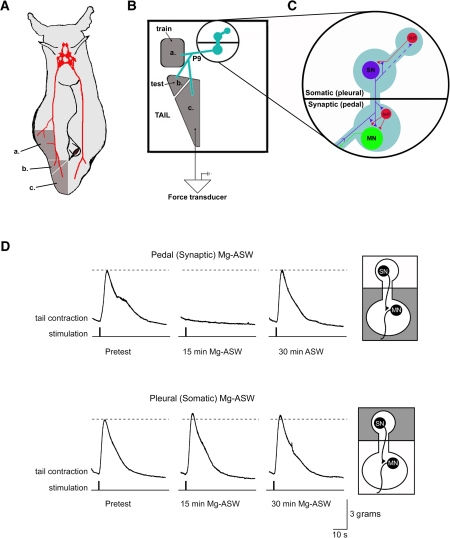Figure 1.
Synaptic activity in the pedal but not the pleural CNS compartment is required for behavioral expression in the “split-bath” tail-elicited tail withdrawal reflex (T-TWR) reduced behavioral preparation. (A) Diagram of an intact Aplysia overlaid with critical CNS reflex circuitry (red). The ipsilateral pleural and pedal ganglia, tail nerve (P9), and exterior tissues (dark gray; a = training site, b = reflex initiation site, and c = withdrawal response output) preserved through surgery to produce the semi-intact behavioral preparation. (B) Arrangement within the experimental chamber of the training site, reflex initiation (test), and behavioral output sites of the isolated tail attached through a single P9 nerve to the CNS in an inner isolated chamber, and (C) the main circuit elements of the preserved pleural (SN soma) and pedal (SN-MN synapse, MN cell body) compartments. SN = sensory neuron, MN = motor neuron, 5HT = serotonergic neurons. (D) Bath exchange of artificial seawater (ASW) for high Mg2+ ASW (Mg-ASW) in the pedal chamber (containing the tail SN-MN synapses) reversibly blocks the T-TWR, which recovers when ASW is reintroduced (top). Bath exchange with Mg-ASW in the pleural chamber (containing the tail SN cell bodies, but not the tail SN-MN synapse) does not disrupt the tail withdrawal response (bottom). T-TWR traces were obtained using a force transducer which tracked tension (in grams of force) on the tail across time.

